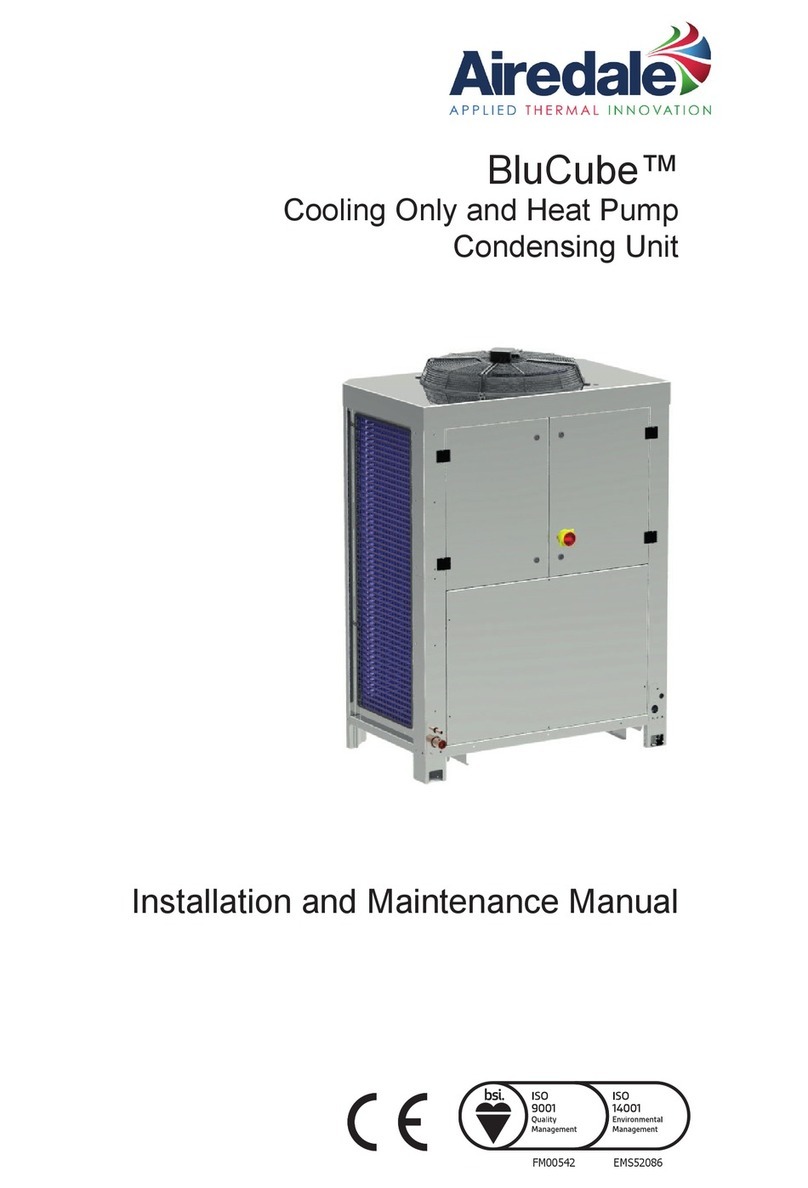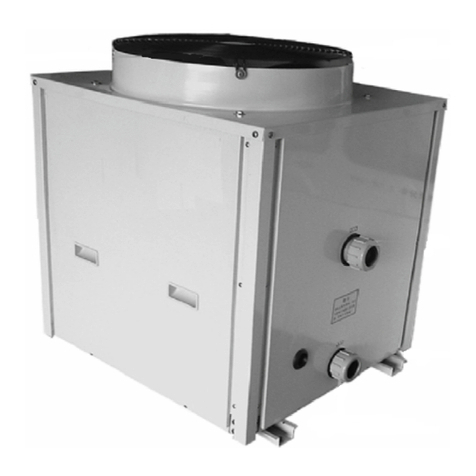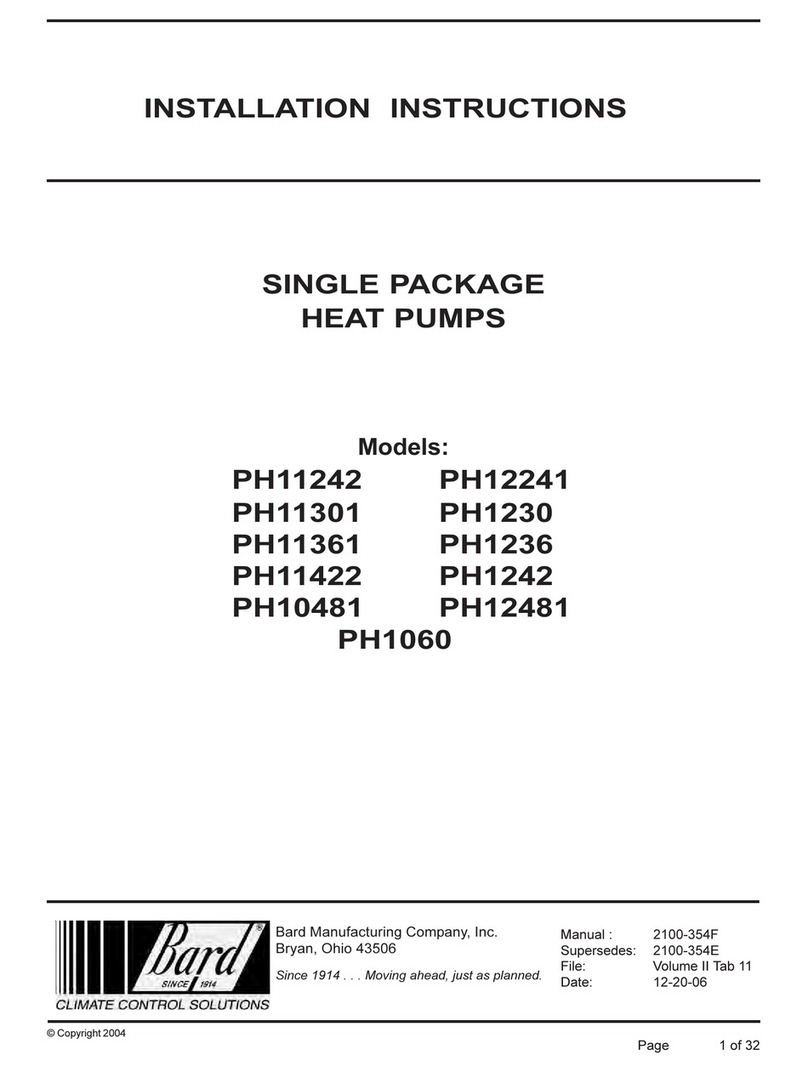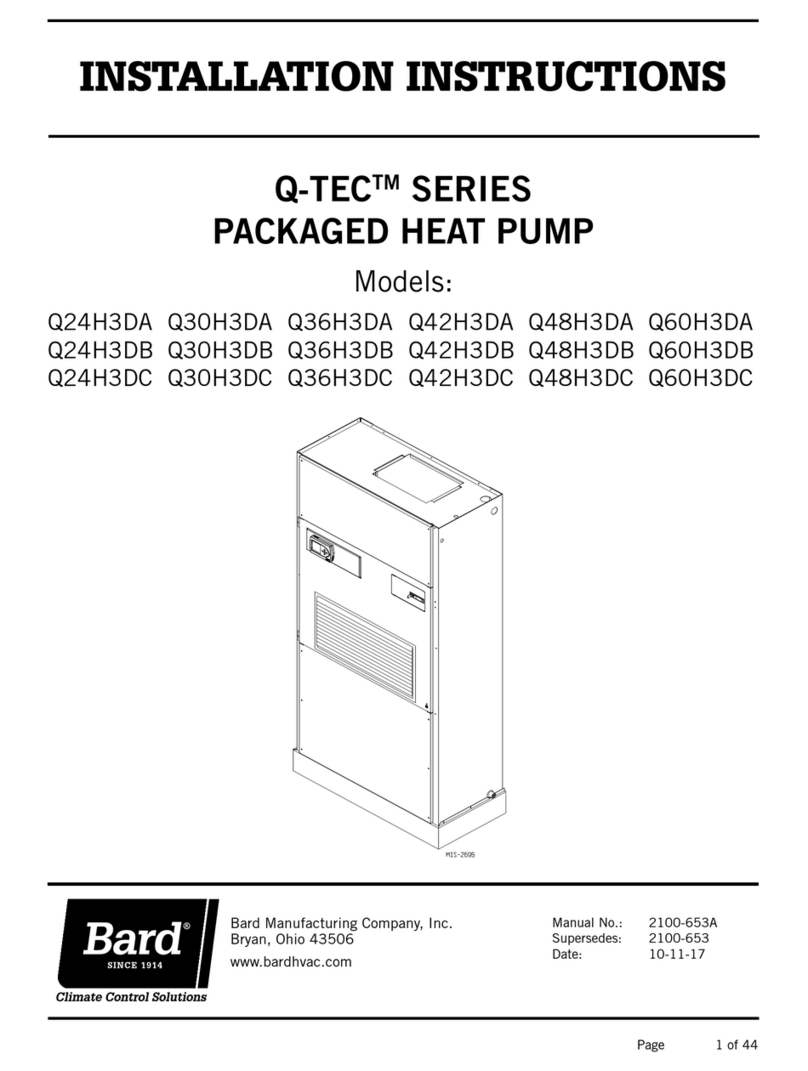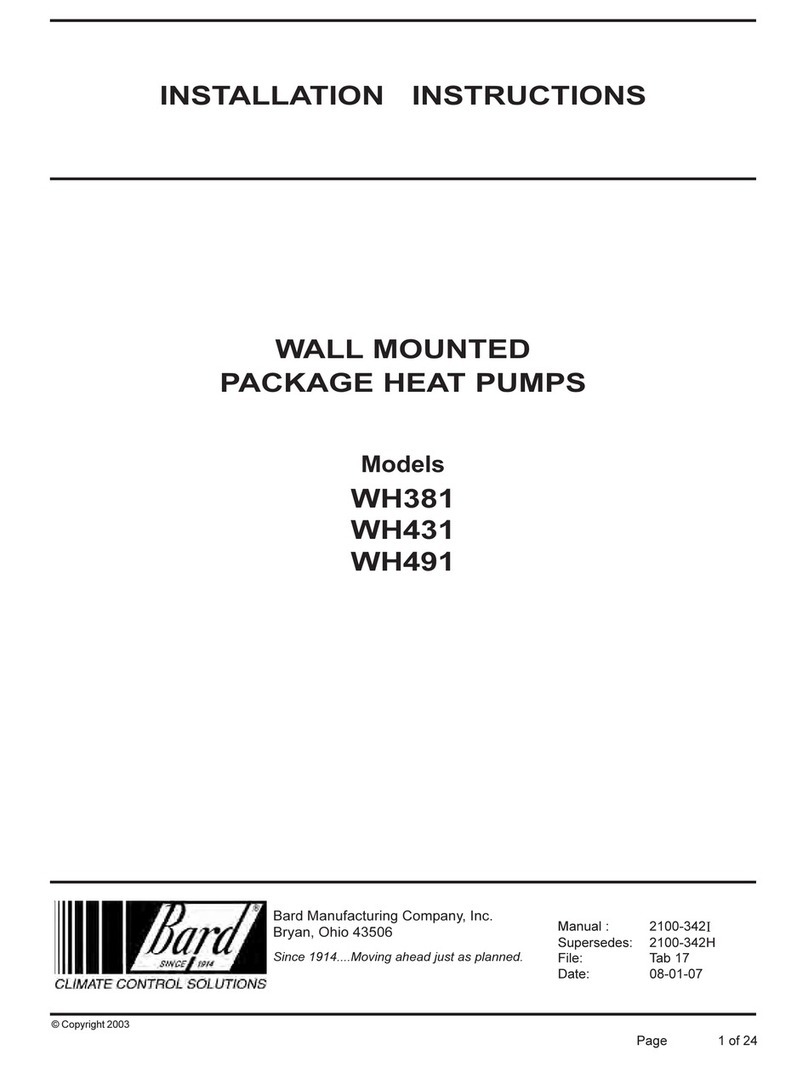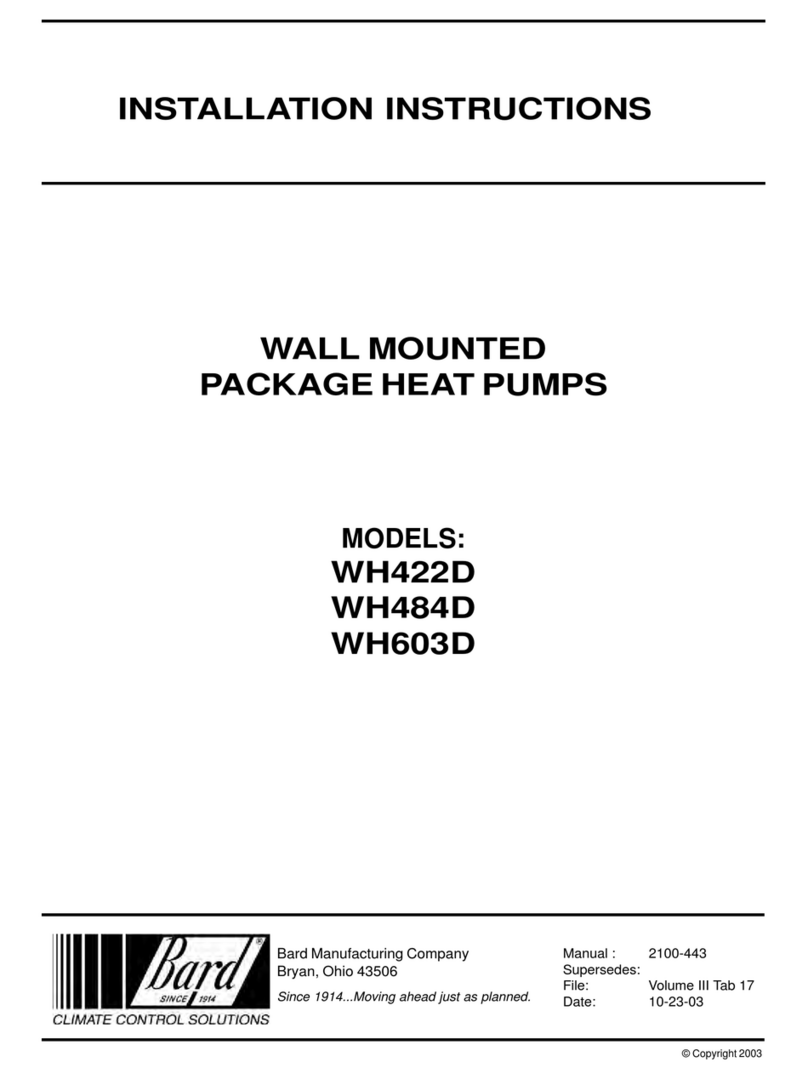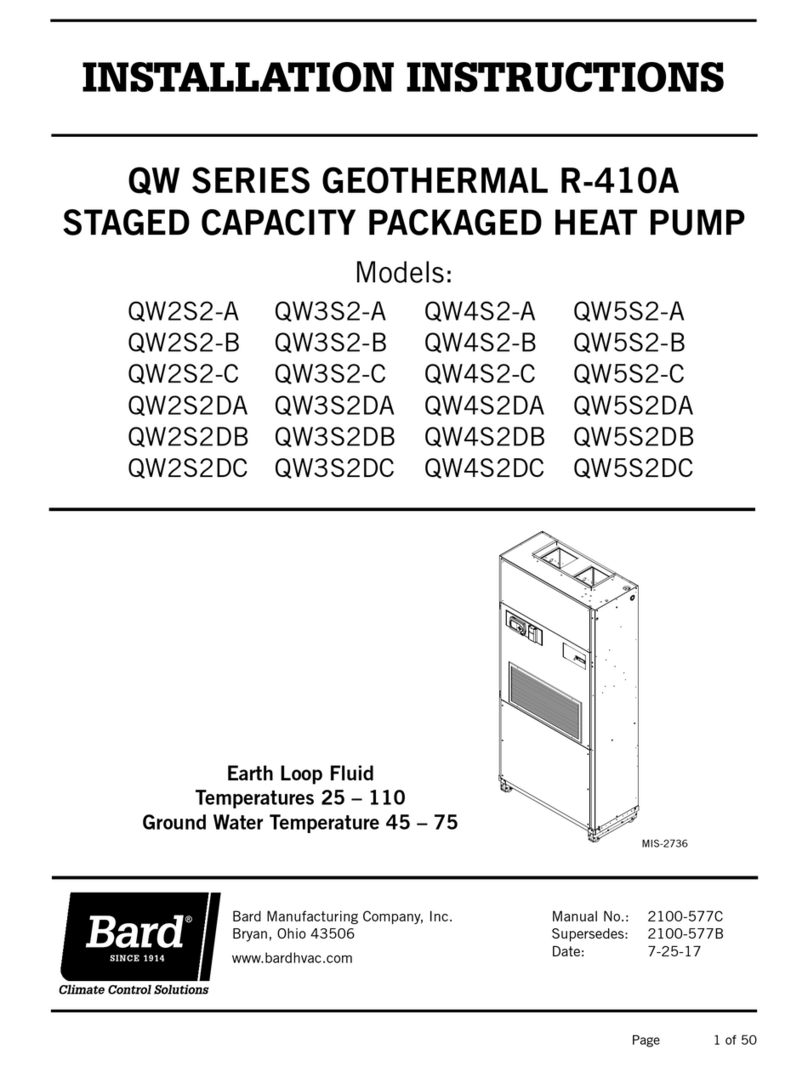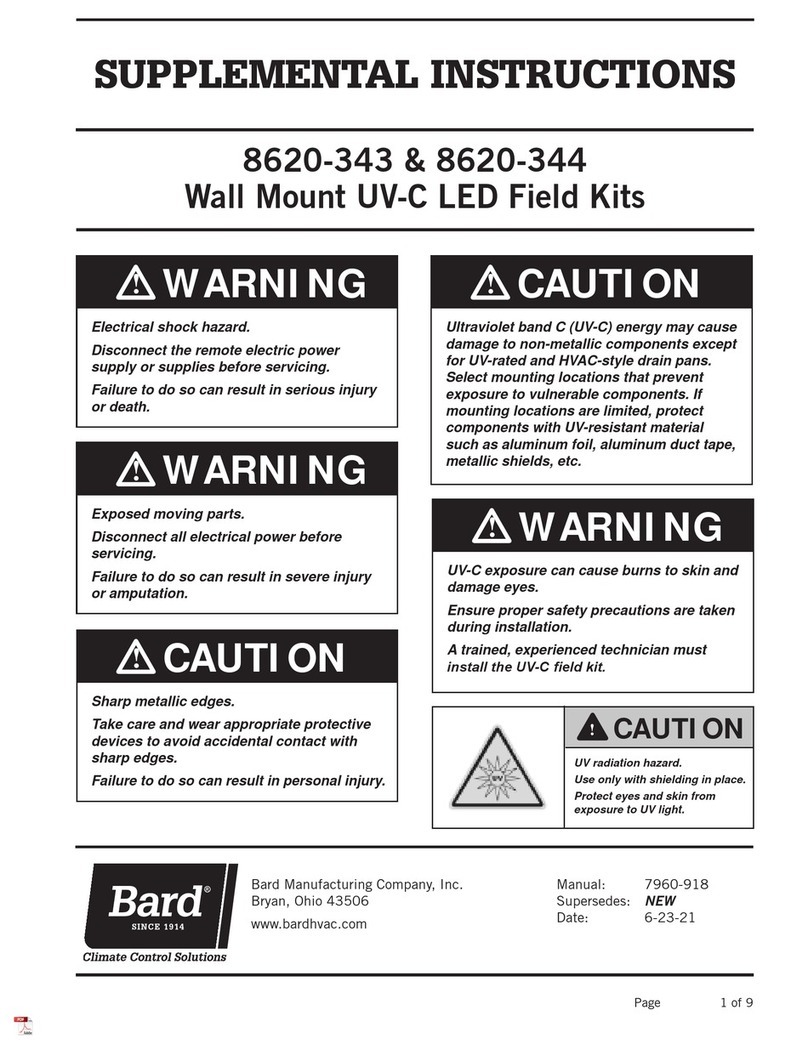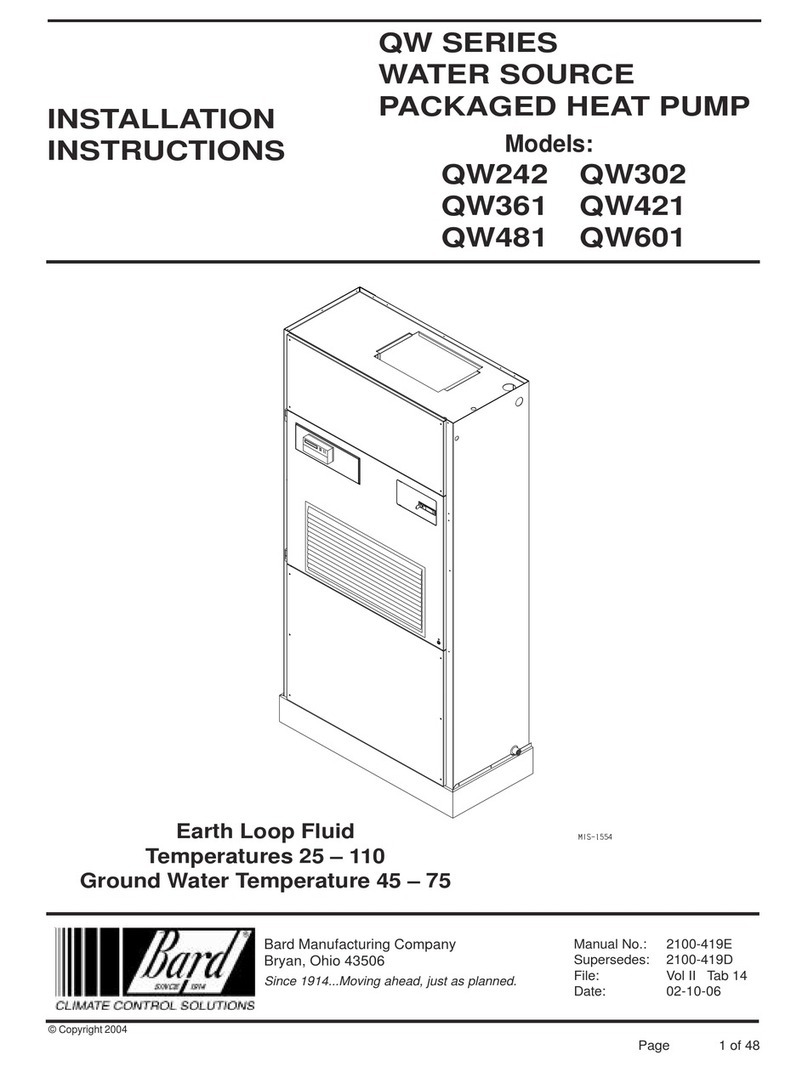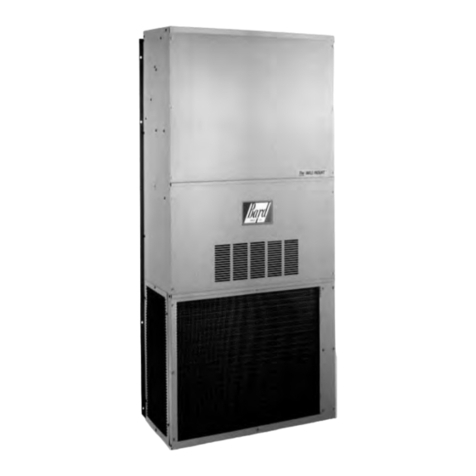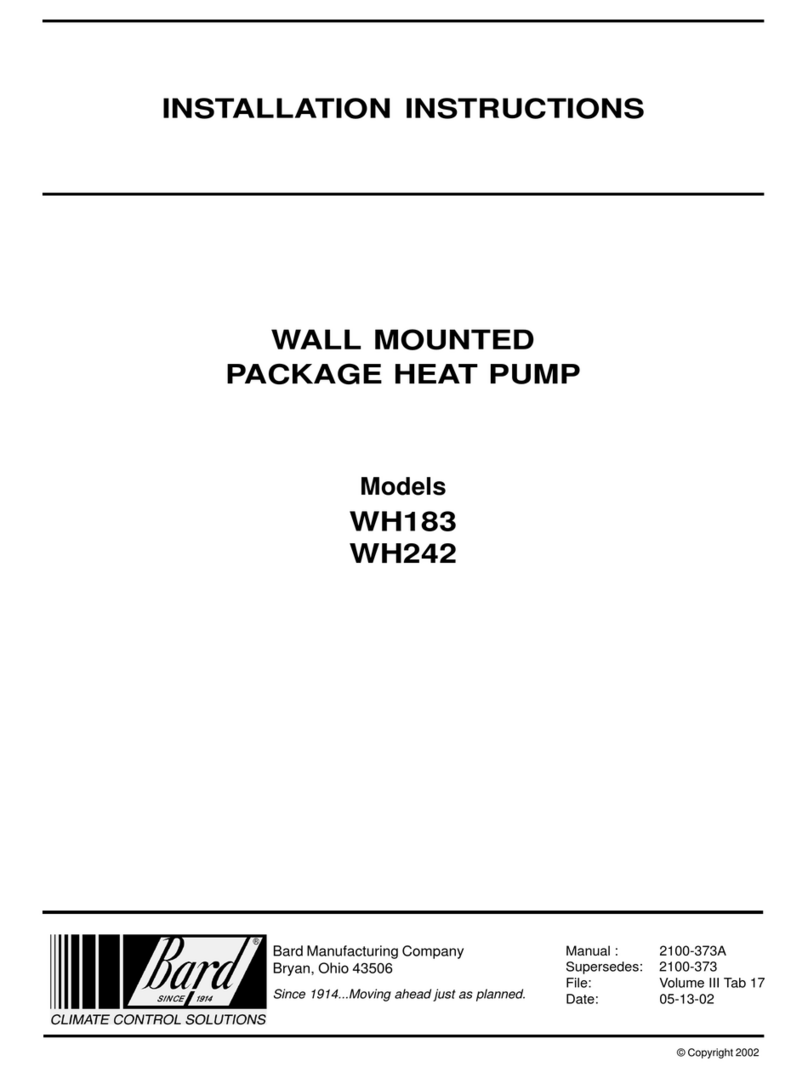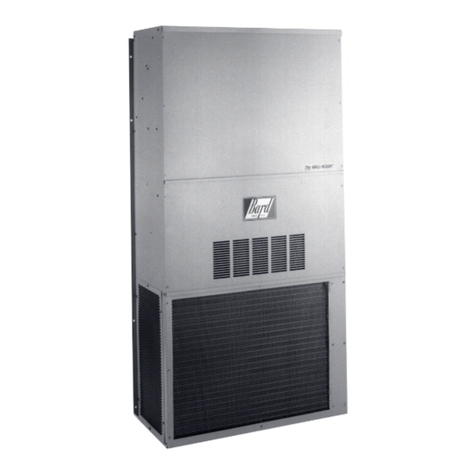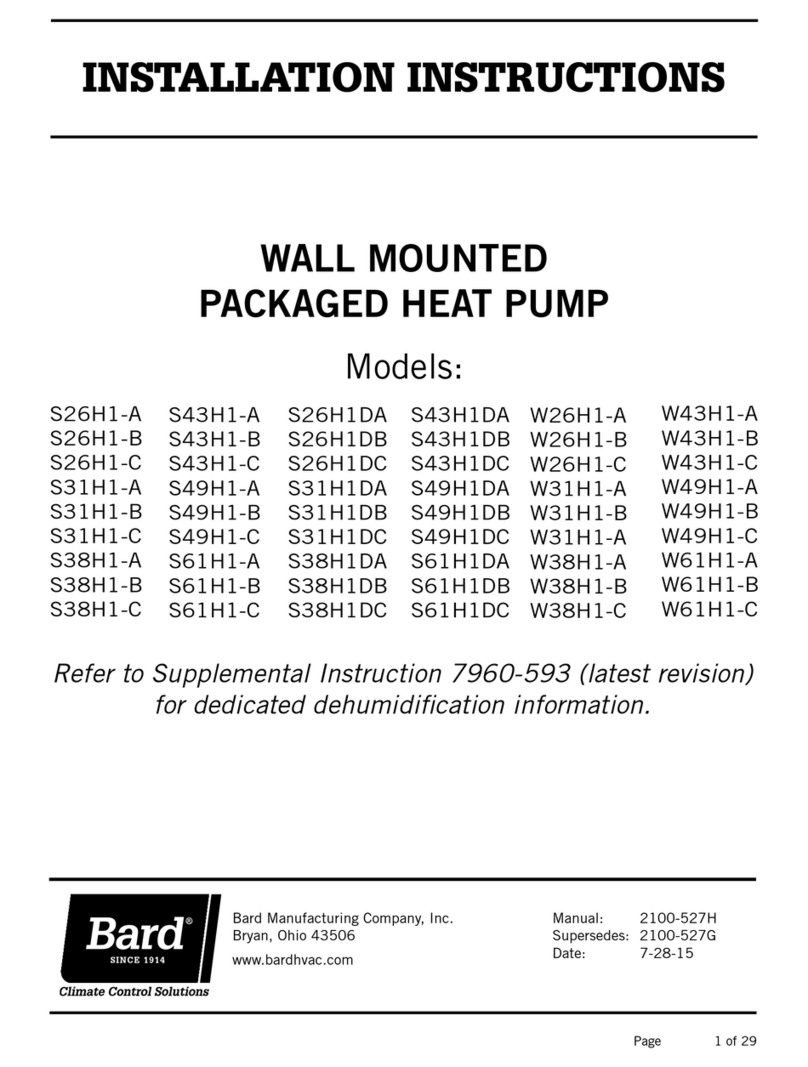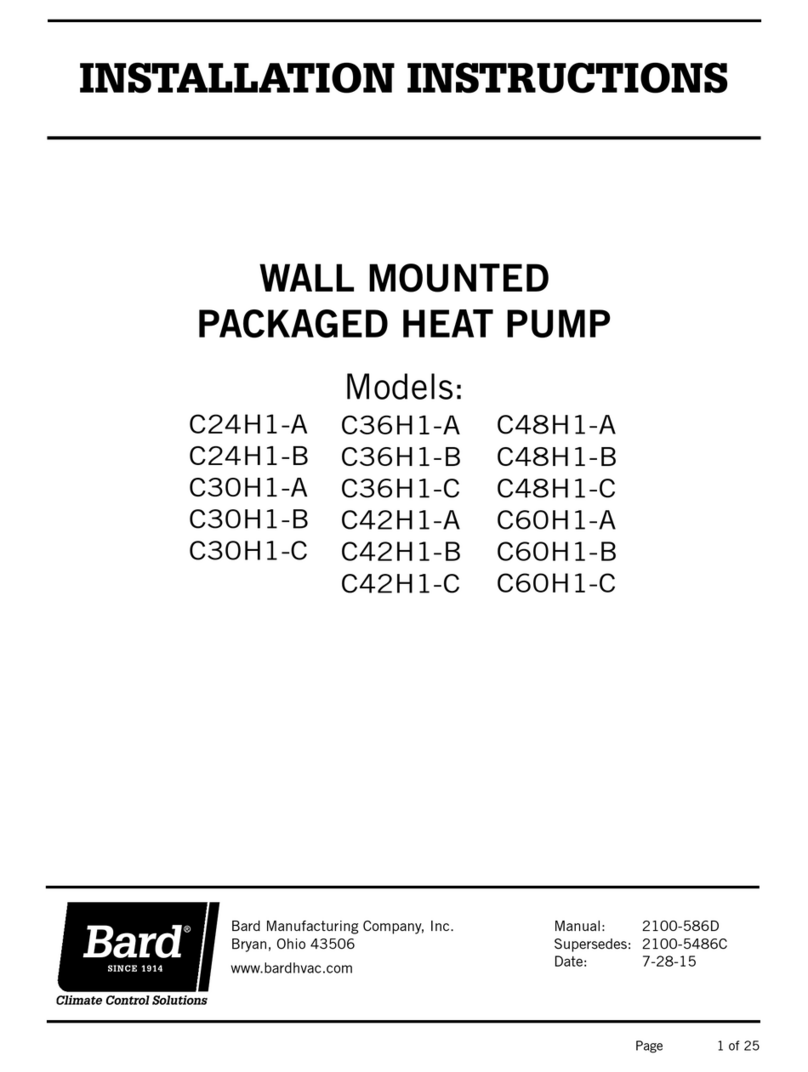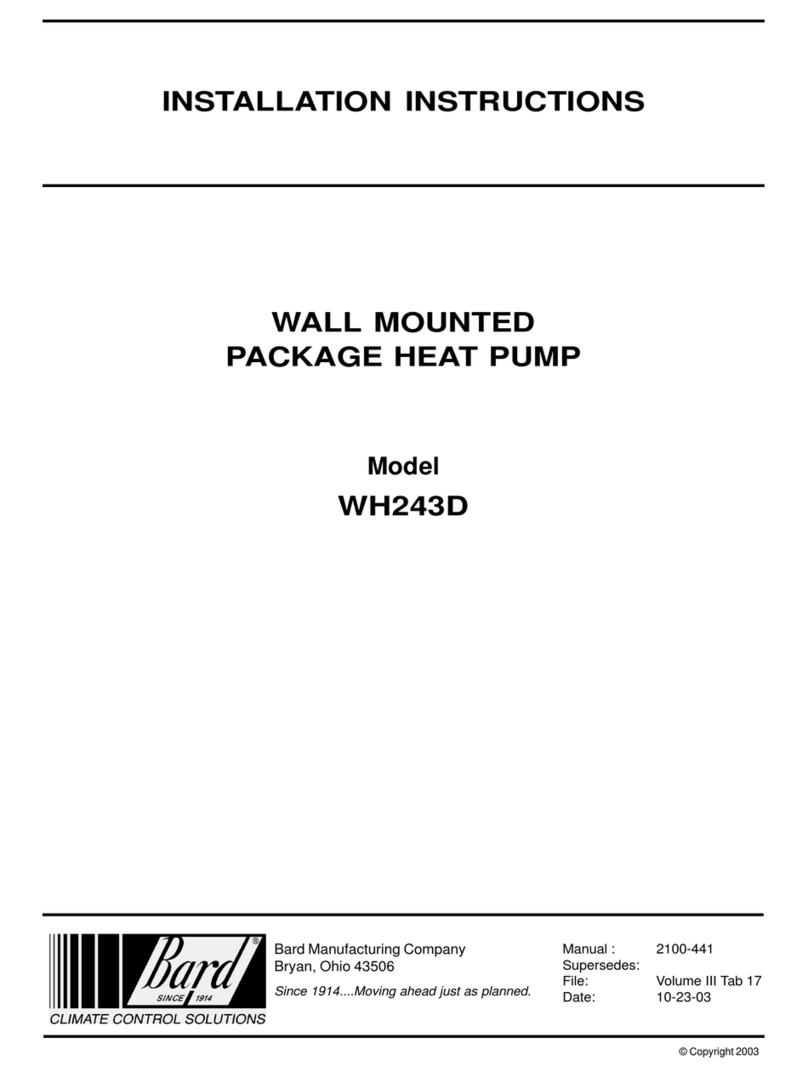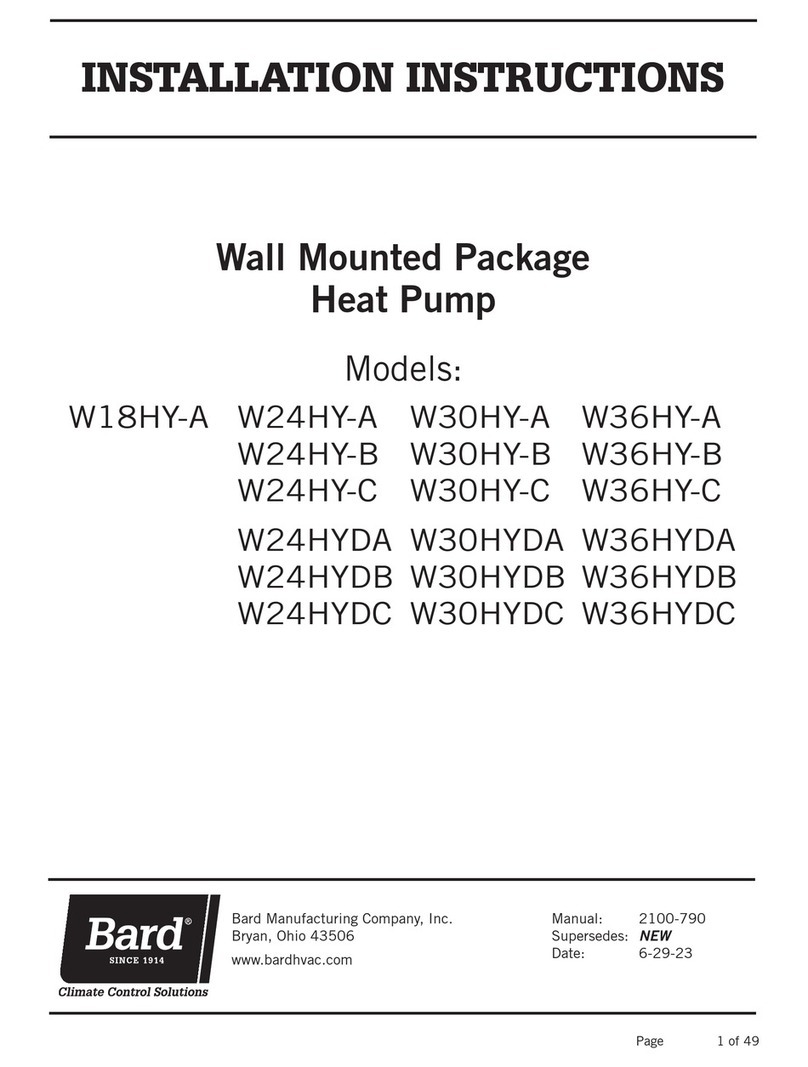
Manual 2100-344
Page 5
INSTALLATION
LOCATION
GENERAL
The unit must be located outside, or in a well ventilated
area. It must not be in the space being heated or cooled. A
sound absorbing material should be considered if the unit is
to be installed in such a position or location that might cause
transmission of sound or vibration to the living area or
adjacent buildings.
SLAB MOUNTING
In areas where winter temperatures DO NOT go below
32° F for periods over twelve hours, the unit may be slab
mounted at grade level. When installing unit at grade level,
install on a concrete slab at least four inches above finished
grade level. Slab should have a slope tolerance away from
the building structure of at lease 1/4 inch per foot, while
being level from side to side. This will prevent ice buildup
under the unit during defrost cycles. Place slab in a location
where runoff water from higher ground will not collect
around unit. See Figure 3.
A minimum of 18 inches should be provided between the
coil inlet and any building surfaces. Provide at least four
feet between coil outlet and any building wall, fences or
other vertical structures. Provide a minimum of three feet
clearance on the service access side of the unit. See
Figure 4
ROOF MOUNTING
When a unit is installed in areas where low ambient
temperatures or strong winter winds exist, it should be
placed so prevailing winter winds are not in direct line with
the heat pump coil. If this is not possible, a wind barrier
should be constructed. Place barrier 24 inches from the coil
inlet side of the unit and in the direction of prevailing winds.
Size barrier at least the same height and width as the unit.
This may be necessary on ground level installations, also.
See Figure 5.
WINTER INSTALLATION BELOW 32°F
In areas where winter conditions go below 32°F for
extended periods, the unit must be elevated above the
mounting surface to prevent snowfall or defrost ice
accumulation from interfering with the operation of the unit.
A minimum of twelve inch elevation is recommended, while
greater elevation may be required for areas of high snow
accumulation. Poured concrete, steel framework, brick,
cement block, etc., can be utilized to construct a suitable
raised mounting platform. See Figure 6.
DUCT WORK
Refer to Tables 4, 5 and 5A when designing duct work for
maximum static pressure available with the specific model
and heater package being installed. Unit duct work is
suitable for 0” clearance to combustible materials.
necessary to dispose of the condensate from the outdoor
coil on the heating cycle, and this is virtually impossible
with the unit installed inside the crawl space.
3.
SLAB MOUNTED AT GROUND LEVEL
–This
type installation is ideal for homes with a slab floor
construction where a roof mounted unit is not desired.
The supply and return duct work can be run through a
furred closet space.
4.
THROUGH THE WALL
– This type installation
requires a suitable framework to be fabricated capable of
withstanding the unit weight. Normally the unit will be
insulated so as to minimize supply and return duct work.
5.
OTHER INSTALLATIONS
– Many other
installations are possible with the packaged heat pump.
No matter what the installation, always consider the
following facts:
A. Insure that the discharge air is not obstructed in any
way so as to cause operation difficulties.
B. The indoor coil drain pan is equipped with a
coupling that must be piped through a condensate
drain trap to a suitable drain.
C. Always mount the unit is such a position that it may
be easily reached for servicing and maintenance.
D. Insure that the unit is clear so that proper air flow
over the outdoor coil will be maintained.
If this unit is operated in cooling below a 65° outdoor
ambient temperature, the installation of low ambient
controls (CMA-6) to unit is required.
TYPICAL INSTALLATIONS
1.
ROOF MOUNTED
– The unit is mounted on a
sturdy base on the roof of the building. Return air to the
unit is brought through a single return grille (grilles with
built-in filters are best since they enable easy access for
filter changing). Return air ducts are attached to the
lower section of the front panel. Supply air is brought
from the unit to attic duct work or to a furred down hall.
Supply air duct is attached to the top of the front panel.
CAUTION: All outdoor duct work must be thoroughly
insulated and weatherproofed. All attic duct work
must be thoroughly insulated. Two inch thick
insulation with suitable vapor barrier is
recommended for both outdoor and attic runs.
In roof top installation, as in all installations, the heat
pump must be level from side to side. However, the unit
should have a pitch along the length to assure complete
external drainage of precipitation and of defrost
condensate.
2.
CRAWL SPACE
– Duct work installed in crawl
space must be well insulated and provided with a vapor
barrier. In addition, the crawl space must be thoroughly
ventilated and provided with a good vapor barrier as a
ground cover. It is most desirable to install the unit
outdoors rather than inside the crawl space, so that it
will be readily accessible for service. In addition, it is

